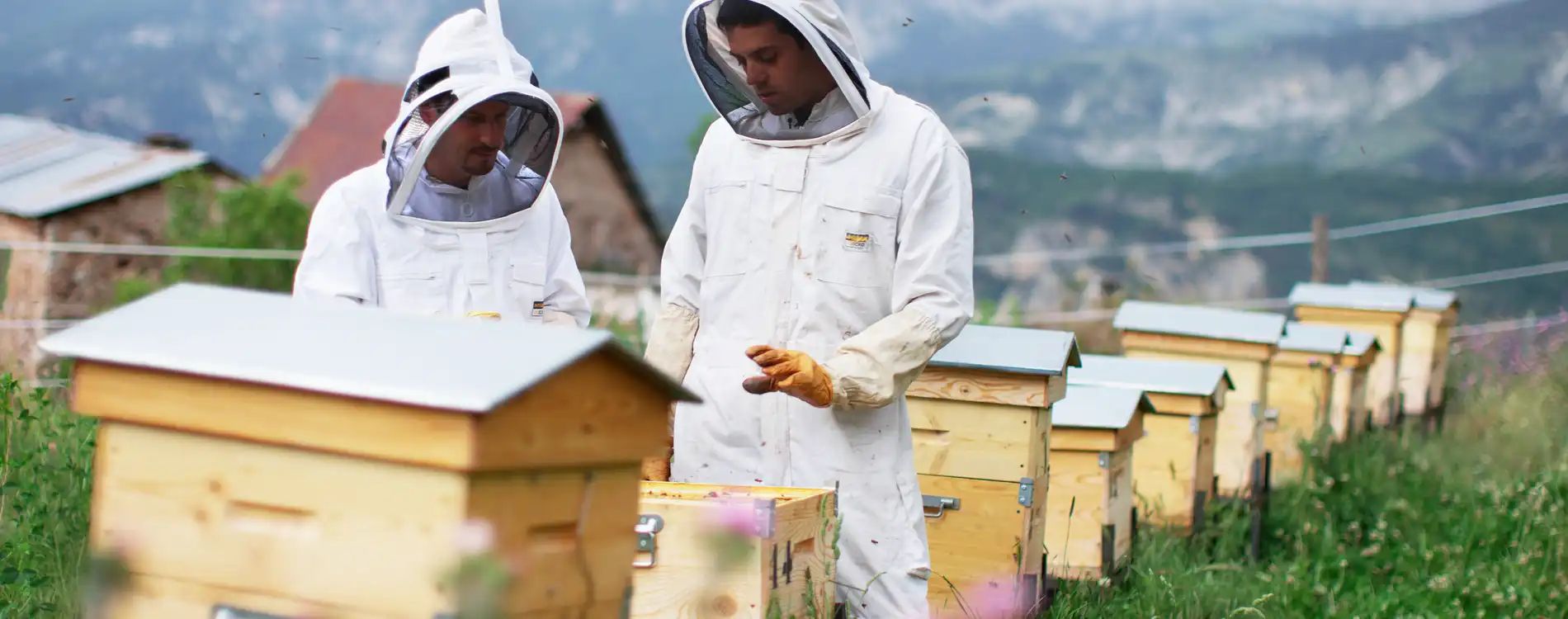Published on September 23, 2019Updated on June 19, 2023
Inspiration takes you behind the scenes of the Monte-Carlo Catering team, Monte-Carlo Société des Bains de Mer's tailor-made catering service, and the various related labours of love. In this third episode, we take another look at one of the stars of breakfast and culinary events: organic Roua honey, produced in the foothills of the Mercantour, symbol of its commitment to the Planet. Two experts, pastry chef Cédric Campanella, and producer Alain Payan, share the secrets of this delicacy with us.
What’s the story behind the Monte-Carlo Société des Bains de Mer's hives?
Alain Payan, producer: Monte-Carlo Société des Bains de Mer was looking for a place to set up its own apiary, and, as descendants of farmers in the upper Var valley we offered them our land. With my four friends, we take care of the bees and hives and their transhumance, alongside our business activities. Previously, we had our own private hives.
Cédric Campanella, pastry chef: We were won over by the producers’ mindset – we could see that this honey is harvested with passion, enthusiasm and respect for nature. We are proud to have our own hives, and to be able to offer foodies local, organic honey. We were also drawn by the fact that the different Roua honeys are harvested at different altitudes, which allows us to have a range of different products.
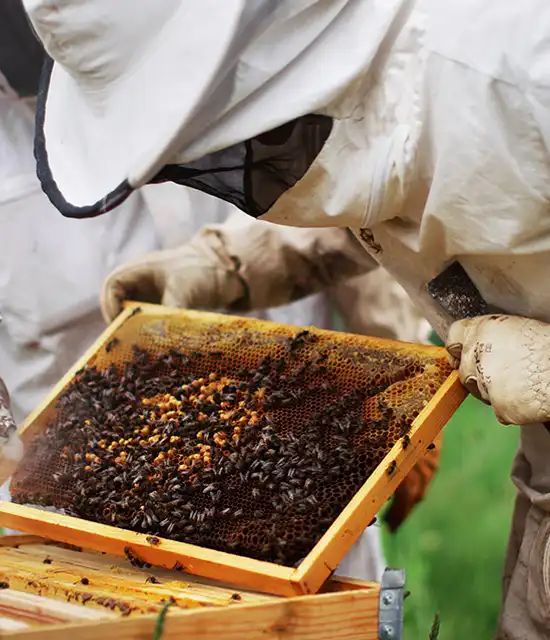
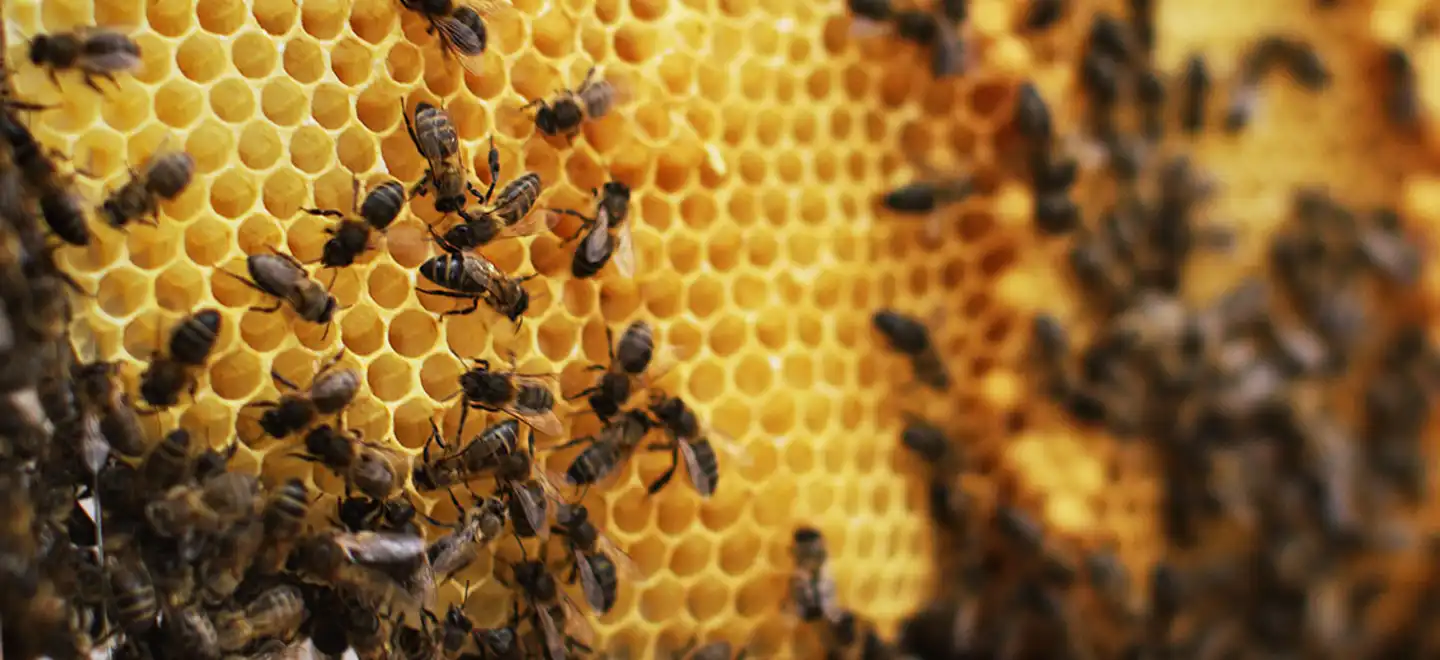
There are four kinds of Monte-Carlo Société des Bains de Mer honey – how are they produced?
AP: The bees have a place to hibernate, after which they are made to follow the annual rhythm of the seasons: in Guillaumes, they spend the winter at 900 metres, then we transport them to a site at 1000 metres, then to 1700 metres, in Valberg, and finally to 2000 metres, during the two warmest months of the year, at the Col des Champs. The floral species vary significantly from one site to another, which gives very different flavours and fragrances to the honey harvested at a given altitude.
Do you use each "variety” differently as pastry chef, Cédric Campanella?
CC: Indeed, I mainly use the "1700" to make mousses, because it has a more full-bodied flavour. The "2000" is a whole new level: it has a strong flavour and can be used to make a very distinctive ice cream. The "900" and "1000" are best used pure, or to make a sauce; I have also created a honey tuile from these two varieties. We wanted versatile products, something that is also quite neutral, because we serve between 1500 and 3000 (sometimes 4000) desserts a day!
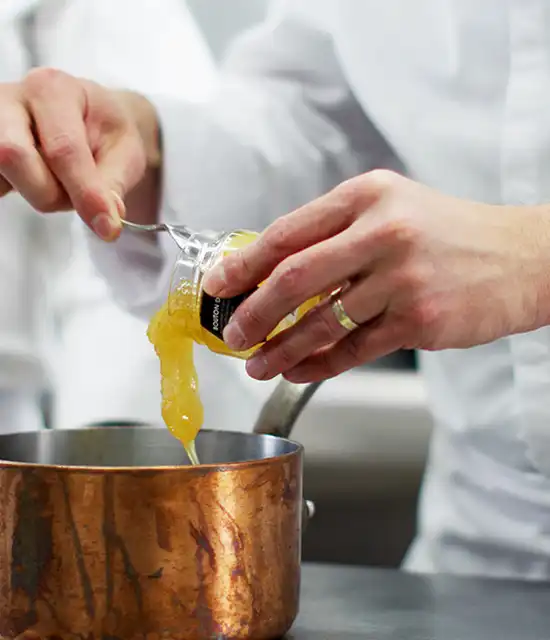
Monte-Carlo Honey Société des Bains de Mer honey is produced with the utmost respect for Nature...
AP: Yes. Our land is twenty kilometres from any intensive agricultural site. Given that bees stay within a three-kilometre radius of the hive, this protects us from pesticides and ensures that the honey harvested is pure and healthy. We received Organic certification earlier this year, this working method was a prerequisite for us.
CC: This certification aside, we’re very lucky to have locally produced honey. We look to work with local suppliers, whether for fruit, vegetables or milk: in our desserts, it comes from inland Nice.
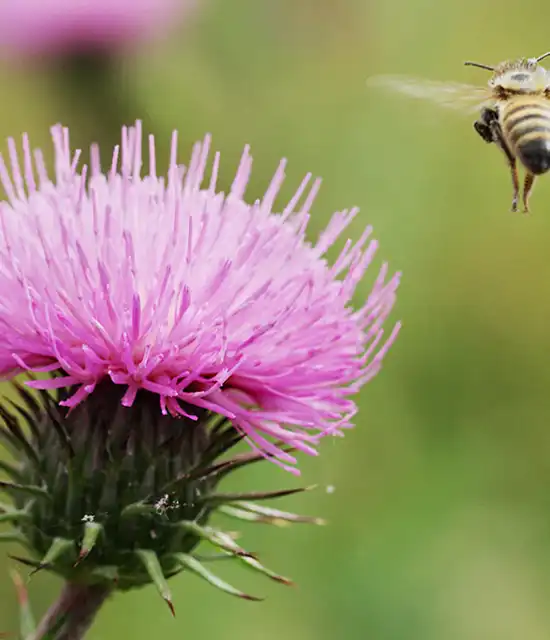
Alain Payan, is it particularly difficult to produce honey in the mountains at different altitudes while preserving bees?
AP: This involves a lot of handling and transferring, which is done at night so as not to disturb them. But it’s worth it, because we also do this in keeping with the philosophy of our elders: we only take the stock from the supers in the hive and leave the bees the honey they need for their own consumption. In this way, we keep the swarms healthy, without using them intensively.
Other than in breakfasts, home-made ice creams and the retail sale of the potted product, what else can you do with honey in terms of desserts?
CC: A dessert with the Corsican citrus fruit citron, which we make into a comfit and then combine with honey. The acidity of the citron is balanced by the sweetness of the honey. This autumn, we’re also going to combine the fragrances of honey with touches of apricot and fig, for rather classic combinations. And, as is customary in Provence, thyme and rosemary – which go very well with honey – will also be on the menu.
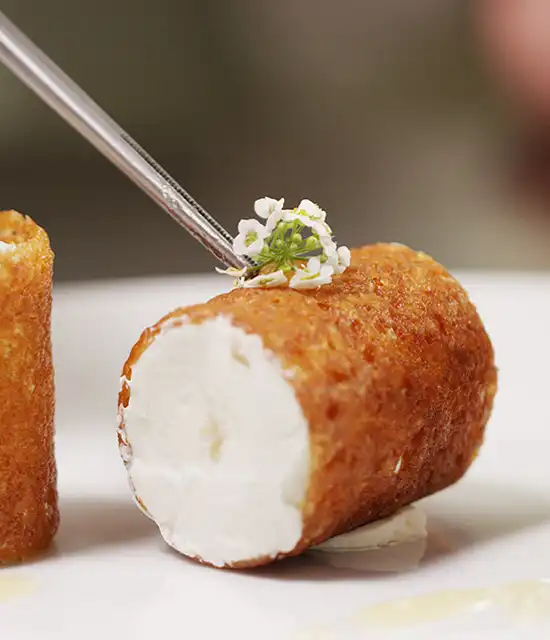
You might also like…
Pierre Boulez: Celebrating 100 years of modern music in Printemps des Arts Monte-Carlo
For this new edition ahead of the classical music festival, Bruno Mantovani explores the music of this visionary composer, conductor and teacher.
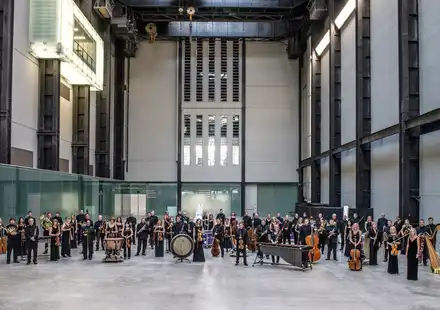
Belle Époque by Bon Entendeur curates the Maona Monte-Carlo’s playlists
Our new summer destination, Maona Monte-Carlo, prepares to reinvent the light and carefree times of the Dolce Vita of the 1960s Riviera. Bon Entendeur came to soak up its glamorous and deliciously retro atmosphere and prepare elegant and fun bespoke playlists for the summer nights.

Interview with Gérard Veyrat de Lachenal, 'Mr Wine’ at the Monte-Carlo Bay Hotel & Resort
Discover our interview with the famous head sommelier of the Blue Bay, the gastronomic restaurant of the Monte-Carlo Bay Hotel & Resort in Monaco.

